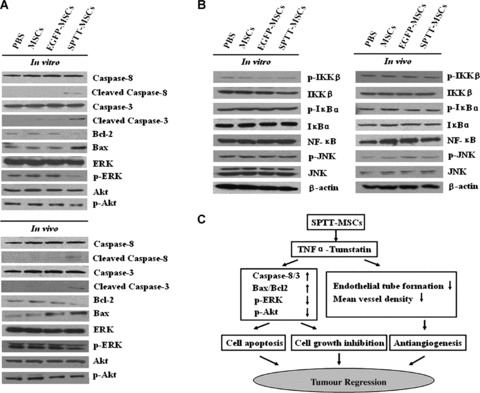Fig 7.

Putative mechanisms underlying the antitumour effects of SPTT-MSCs. (A) The proteins from PC3 cells and tumour tissues were acquired and analysed for different proteins. The SPTT-MSCs-treated group had increased cleavage of caspases-8 and -3, and an increase in the Bax/Bcl2 ratio, as well as decreased levels of phosphylated ERK-1/2 and Akt compared to the PBS group. (B) After the treatments with SPTT-MSCs, the expression of NF-κB protein and the phosphorylation status of IKK-β and Iκ-Bα in PC3 cells and tumour tissues did not change, nor was there any inhibition of JNK activity. (C) The possible mechanisms of anticancer action of SPTT-MSCs. In the death receptor-mediated caspase-dependent apoptotic pathway, the SPTT-MSCs can directly reduce prostate cancer cell viability by producing the active TNF-α peptide. In the anti-angiogenic pathway, the SPTT-MSCs directly inhibit the proliferation of vascular endothelial cells by producing the active Tumstatin45–132 peptide.
